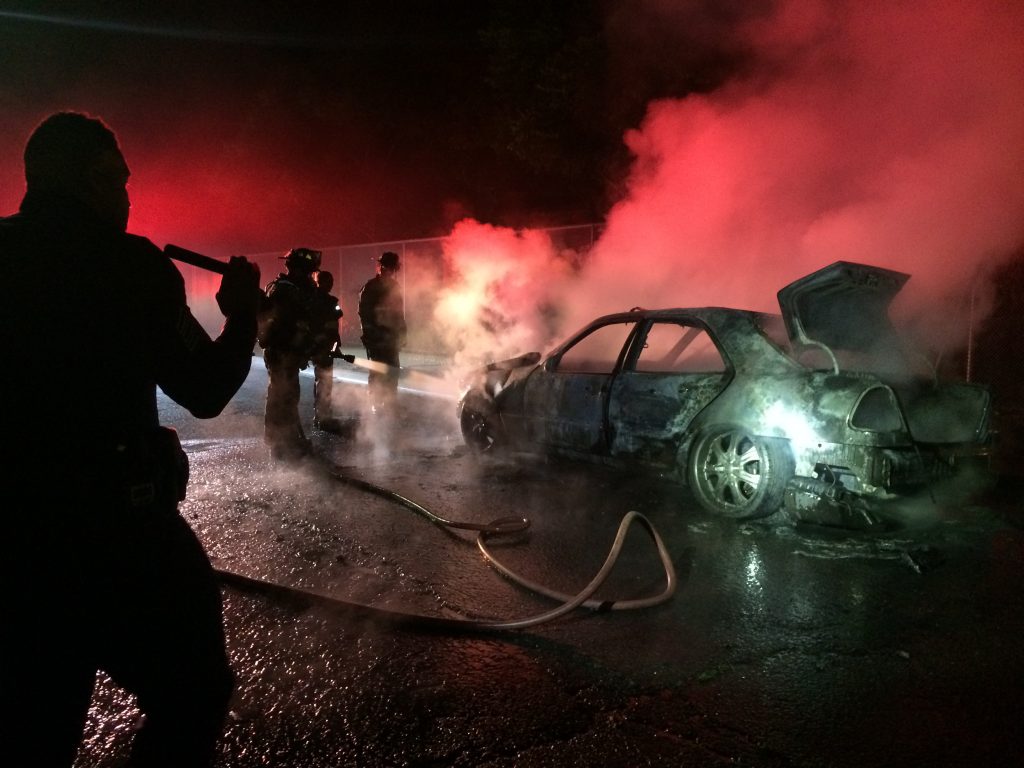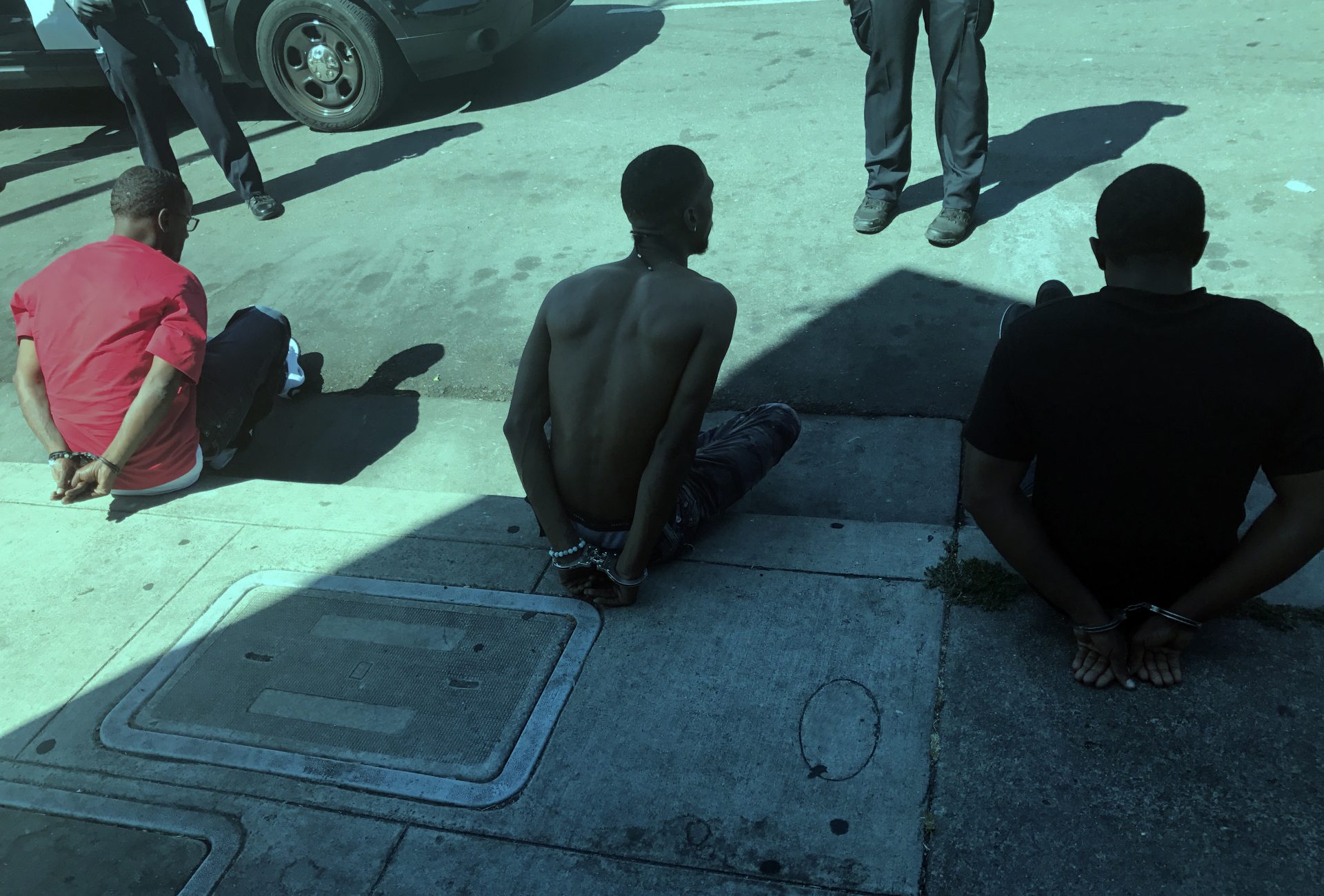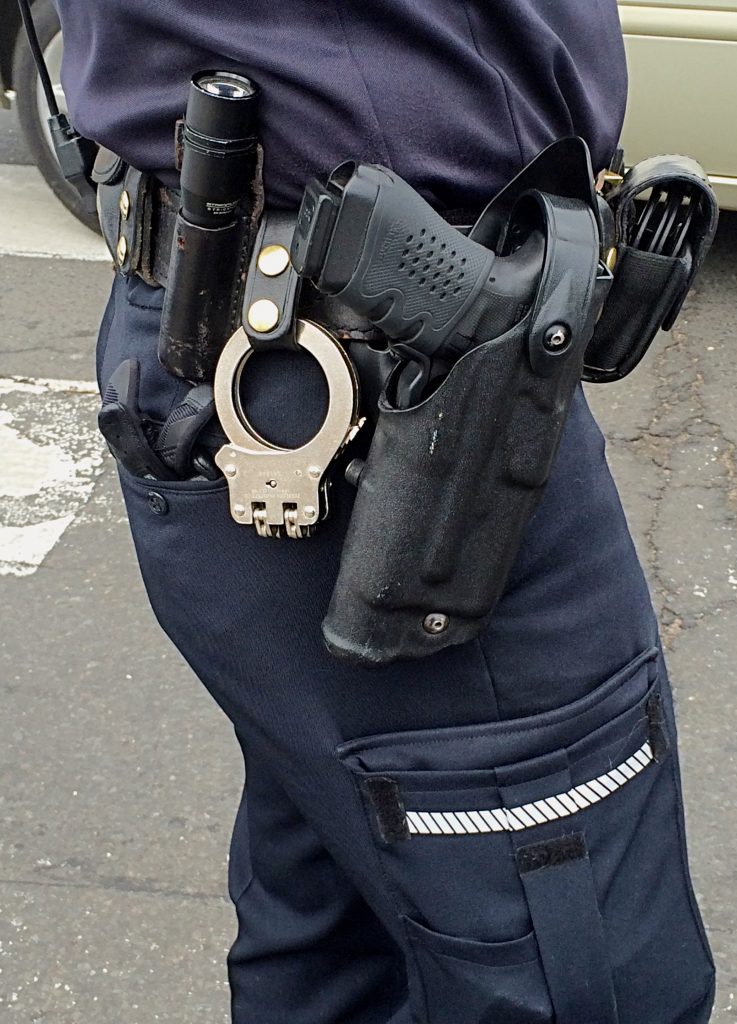In July 2016, a gunman ambushed Dallas police officers, killing five, injuring an additional nine (along with two civilians), and fueling public rhetoric about a so called “war on cops.” At the time of the Dallas shooting, Michael Sierra-Arévalo, now an assistant professor of sociology at The University of Texas at Austin, was doing fieldwork with police in another U.S. city. He witnessed how profoundly the Dallas incident resonated with officers over a thousand miles away.
It reinforced what Sierra-Arévalo calls “the danger imperative” in U.S. police culture—a singular focus on the threat of violence against officers that persists in defiance of the long-term trends in police safety (policework has been getting steadily safer for the past half century). This danger imperative influences how police are trained, how they view the purpose of the job, and how they engage with the public they are sworn to protect.
During the course of his research, Sierra-Arévalo went on many hours of ride-alongs with police officers in three major U.S. cities (which he gives the pseudonyms West River, Elmont, and Sunshine for anonymity), allowing him to observe policework firsthand while conducting lengthy interviews on the motivations behind it. This research led to three academic papers and a forthcoming book in which he argues that policing’s preoccupation with violent threat doesn’t necessarily doesn’t improve public or police safety. Instead, it can place both officers and the public in harm’s way.
Dangerous jobs
How dangerous it is to be a police officer, explains Sierra-Arévalo, depends on how we define “dangerous.” If our metric is the number of deaths on the job, policework isn’t even in the top ten most dangerous occupations in the U.S. But if we focus specifically on the chances of being shot—a threat which police are specifically trained and expected to address—police are at especially high risk. Sierra-Arévalo’s research shows that police are killed with a firearm at a rate 1.6 times greater than the general public, and non-fatally shot at a rate 2.7 greater. Still, the overall risk of being shot, even as a police officer, is quite low, and most officers will never need to fire their weapon on duty. Despite what Hollywood depictions would have us believe, real police work just isn’t that action packed.
“The vast majority of policework has nothing to do with violence,” says Sierra-Arévalo. “It’s something much more akin to armed social work. You’re dealing with low-level disputes. You’re dealing with arguments between roommates or lovers or family members, disputes between neighbors about whose trash cans are where. But the cultural emphasis in their training, in their policy, in their day-to-day interactions revolves around the unlikely but still possible eventuality of lethal violence.”
Preoccupation with the unlikely chance of being shot during a routine domestic dispute call may seem contradictory to the romanticized image of brave police officers literally running toward danger in pursuit of a suspect, but officers don’t see it that way. Those whom Sierra-Arévalo spoke with viewed their attitudes not as twitchy paranoia, but rather as seasoned vigilance born of insider knowledge that they alone possessed as police officers. They had seen enough in their jobs to know how bad things could get.
Safety first
While prioritizing safety may be a good idea in theory, training officers to view every civilian encounter as a potential shootout increases the chance that they will use unnecessary force. Baked into that training, Sierra-Arévalo explains, is the idea that any sign of noncompliance with police orders is a precursor to violence that must be quickly subdued in order to maintain control. This can have the effect of antagonizing some individuals, leading to what are called “dominance contests” in which neither party is willing to back down. In such situations, the police, who have weapons and often numbers on their side, use violence to force compliance. In addition to the obvious potential for physical injury to civilians and officers themselves, this aggressive approach to law enforcement also damages public trust in police as a group.

During his many ride-alongs, Sierra-Arévalo also noticed that a fixation on the threat of violence caused officers to ignore other, more likely dangers. An example that comes up frequently in his work is seatbelts. Automobile accidents make up a significant percentage of line-of-duty deaths among police, and yet Sierra-Arévalo witnessed many officers deliberately avoiding seatbelts when speeding to a call. Their logic? A seatbelt might hinder their ability to exit the vehicle or reach for their gun upon arrival. Statistically, the risk of crashing a car at 70 miles per hour while not wearing a seatbelt is far higher than that of a suspect getting the upper hand in the half-second it takes to unbuckle a seatbelt. Nonetheless, police viewed the former risk as acceptable whereas the latter would constitute a failure in fulfilling the demands of their work.
Police aren’t uniquely bad at calculating risk, says Sierra-Arévalo. We are all bad at it. It’s just that in the case of policing, “There’s a cultural component that dooms officers to make these sorts of miscalculations in the risks that are actually more likely to get them killed.”
Rules to live by
The preoccupation with violent threat also impacts policies governing police behavior and use of force, which are riddled with broad exceptions to accommodate officer safety. Policies often contain addendums stating that they need only be followed, “if an officer perceives they can do so safely,” or similar phrasing. The inherent subjectivity of assessing whether or not an action is safe gives police considerable leeway to disregard policy and also legal cover should things go awry when they do so.
Even without such exceptions, many policies are crafted with the safety of police prioritized over that of civilians, and many cases of officers using what would appear to be extremely disproportionate force are actually instances in which procedures were followed to the letter. If you assumed, for example, that officers would strive to minimize injury to a target when using a firearm, think again.
“Police are trained that you don’t just shoot someone twice in the chest and wait,” says Sierra-Arévalo. “I’ve seen trainings myself where officers are instructed to continue to shoot and to follow the person to the ground shooting all the way as they fall. That is explicitly trained in some police academies. All of that is not only accepted but is demanded by what I’ve called the danger imperative. It is the preferred response to a threat that is perceived by police as a deadly threat because it’s the one most likely to ensure their safety.”
Sierra-Arévalo cites a recent incident in a Los Angeles shopping mall in which police shot and killed a suspect and also accidentally killed a teenage girl who was struck by a stray bullet while in a dressing room. Police had received reports, which turned out to be false, that the suspect was armed with a gun. The officer who fired his weapon was following active shooter protocol refined over several decades to address this very American threat. While some, including fellow police on the scene who implored him to slow down, questioned the officer’s decision to discharge a high-powered rifle in a crowded store rather than starting with less lethal options, the law is technically on his side.
“This work is really hard because many, if not most, of these shootings are legal,” Sierra-Arévalo explains. “Legal and ethical are not the same thing. Moral and legal are not the same thing. Best practices and legal are not the same thing. Logical and legal are not even the same thing. But the reality is that police have been given wide latitude not just in their policies but in state law and even in federal law when it comes to the use of force.”
Making policing safer
Sierra-Arévalo has done some research on community policing as a way to improve public perception of the police. He is skeptical, however, that it would have much impact on the attitudes of officers toward the public, given that police exist in a rigid culture that is hyper-focused on violence and danger.
One idea he notes for improving safety that wouldn’t necessitate a complete overhaul of police culture is raising the minimum age for entering the police academy.
“We figured out a long time ago that it’s a bad idea to rent a car to a young man under the age of 25,” says Sierra-Arévalo. “And that’s because they do dumb stuff. They drink more, they drive faster, they fight with each other more, they just engage in riskier behavior. But policing systematically selects men under the age of 25 to teach them how to use violence, to give them a gun, handcuffs, and arrest powers.”
In interviews, older officers often described how their approach to policing changed over the years. They’d learned that aggression isn’t always a winning strategy and that sometimes the best course of action is to slow down and try to deescalate a situation. Cadets over age 25 have more life experience and would be more likely to have a family, both of which tend to reduce reckless behavior. Raising the age limit would also weed out candidates that already have DUIs or other disqualifying offenses on their records by that age.
Another small intervention that could go a long way is simply not doubling down on the worst aspects of existing police training. The “warrior cop” ideology of authors like Lt. Col. Dave Grossman, who leads seminars across the country teaching police to think of their workplace as a battlefield, where they must be prepared to use lethal force against a hostile enemy, is not exactly compatible with friendly police mottos like the NYPD’s “Courtesy, Professionalism, Respect.” Grossman’s ideas and his books have found their way into official police academy curricula and state funds are sometimes used to send officers to Grossman seminars to fulfill ongoing training requirements. Such seminars, says Sierra-Arévalo, should not be allowed to count toward those required training hours. He stresses not just the importance of removing these influences from police training at all levels but also of doing a better job tracking how training is conducted and the kind of post-academy education to which officers are exposed.
The soul of policing
All the above said, Sierra-Arévalo notes that we must keep in mind that even if we succeed in removing the most hotheaded officers and the most incendiary training, ultimately, “the purpose of policing is violence.” Police are provided with weapons and authorized to use force with the understanding that they can and will do exactly that. Any discussion of reforming police must first consider whether police departments are the appropriate entities for all the tasks they currently handle.
Some of the calls officers respond to may be too trivial (are armed officers really necessary to take a stolen property report?), whereas others are likely too specialized (officers are not trained mental health professionals). Police themselves, Sierra-Arévalo says, acknowledge that their particular skill-set isn’t useful in many circumstances and they can be frustrated by being asked to fill so many ill-fitting roles. But decades of political decisions that syphon money away from other institutions while continually increasing funding for law enforcement have created a situation in which police are often, especially in poorer neighborhoods, the only available responders to problems of all kinds.
“They are being handed all the broken pieces of society and told to deal with it because, frankly, you can’t get a lot of funding for social services in the U.S.,” he notes.
Sierra-Arévalo’s book, tentatively titled The Danger Imperative: Violence, Death, and the Soul of U.S. Policing, is scheduled for release in 2023. It explores how the preoccupation with danger is reinforced and amplified in all aspects of policing from the academy onward. In discussing the violence that results from the current model of law enforcement, he focuses less on deaths and more on everyday uses of force—stops, searches, arrests, handcuffing—which receive less media coverage but are far more prevalent and have significant impacts on the how officers and the public view one another.
“If I were to erase police shootings tomorrow and they never happened again,” says Sierra-Arévalo. “The notion that I’ve solved police violence is wrong and overly optimistic. Understanding how all of it is wrapped up in this drive to ensure officer safety at all times is key to understanding the soul, the motivating ethos, of policing.”

